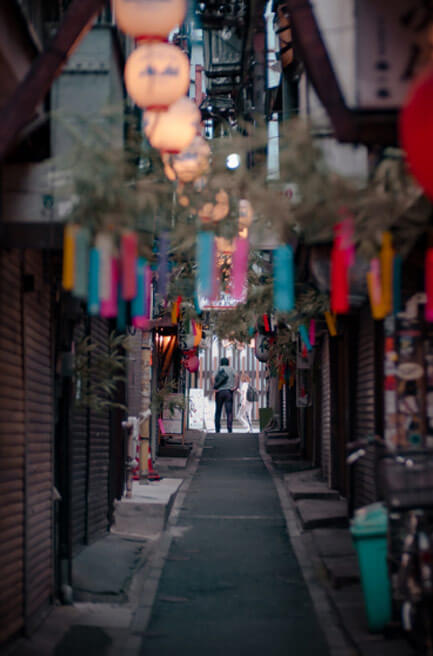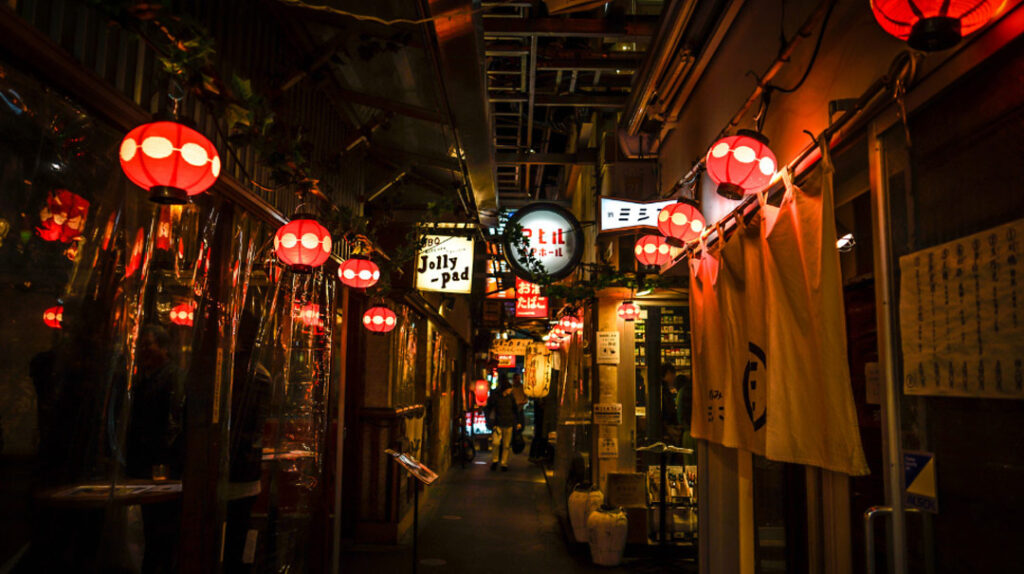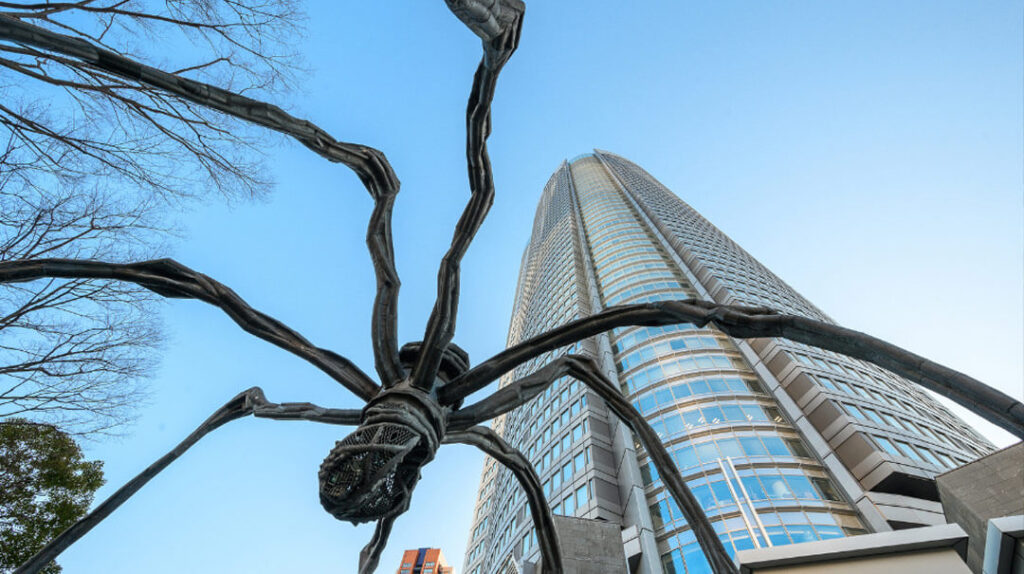Welcome to the AHG Tokyo travel guide. Tokyo: The very name conjures images of a sprawling metropolis, a futuristic cityscape adorned with neon lights, and a place where the past and the future intermingle seamlessly. Tokyo, the capital of Japan, is a captivating blend of tradition and innovation, a city that continually reinvents itself while preserving its rich cultural heritage. Situated on the eastern coast of Japan’s Honshu Island, Tokyo is not just a destination; it’s an experience that will leave an indelible mark on your soul.
Tokyo: Where Tradition and Innovation Converge in the Heart of Japan
In Tokyo, history and modernity exist side by side, creating a dynamic and captivating urban tapestry. This vibrant city, with its towering skyscrapers and ancient temples, offers a kaleidoscope of experiences for every traveler. Here’s a glimpse into what makes Tokyo an enchanting Asian holiday destination:
The People of Tokyo: Warmth Amidst Urban Hustle
The heart of Tokyo lies not just in its architecture or technology but in its people. Tokyoites, as the city’s residents are known, are renowned for their politeness, warmth, and unwavering hospitality. Despite the hustle and bustle of city life, you’ll often find locals going out of their way to assist travelers, making your visit a memorable one.
Recent History: A Journey of Rebuilding
Tokyo’s recent history is marked by resilience and growth. In the aftermath of World War II, the city, like the rest of Japan, embarked on a remarkable journey of reconstruction. Today, Tokyo stands as a symbol of Japan’s post-war recovery, economic prowess, and technological innovation. The city’s transformation over the last few decades has been nothing short of astounding.
A City of Many Faces: Tokyo’s Diverse Neighborhoods
Tokyo is not a monolith; it’s a collection of diverse neighborhoods, each with its own personality and attractions. From the bustling streets of Shibuya, where the iconic Shibuya Crossing mesmerizes visitors, to the historic district of Asakusa, where Senso-ji Temple stands as a testament to centuries of culture, every corner of Tokyo offers something unique.
Tokyo Disneyland: Where Magic Meets Japanese Hospitality
For families and Disney enthusiasts, Tokyo Disneyland and Tokyo DisneySea are must-visit attractions. These theme parks are known for their exceptional hospitality, impeccable cleanliness, and an extra dose of Disney magic. It’s where beloved characters come to life against the backdrop of Japanese precision and service excellence.
A Culinary Odyssey: Tokyo’s Food Culture
Tokyo’s culinary scene is legendary, and rightfully so. From humble street stalls serving delectable ramen to Michelin-starred sushi restaurants, Tokyo offers a culinary adventure like no other. The city’s dedication to perfection in food preparation is a reflection of its broader commitment to excellence.
A Futuristic Wonderland: Tokyo’s Technological Marvels
In Tokyo, the future is now. The city is a playground for tech enthusiasts, offering glimpses into cutting-edge innovations. From the Robot Restaurant in Shinjuku, where mechanized creations entertain diners, to the Odaiba district’s Miraikan Museum of Emerging Science and Innovation, where you can interact with futuristic exhibits, Tokyo invites you to embrace the future.
Tokyo as an Asia Holiday Destination: A Unique Blend
Tokyo’s appeal as an Asia holiday destination lies in its ability to cater to a wide range of interests. Whether you’re a history buff, a fashionista, a tech geek, a foodie, or someone simply seeking a culturally rich experience, Tokyo has something in store for you. It’s a place where tradition and innovation coexist harmoniously, and where the past gracefully informs the future.
Tokyo’s allure is not limited to its city limits. Beyond its urban landscape, you’ll discover serene gardens like Shinjuku Gyoen and Meiji Shrine’s lush forest, providing tranquil escapes from the city’s energetic pace. Furthermore, Tokyo’s efficient public transportation system makes it easy to explore nearby destinations like Nikko, Kamakura, and Hakone, offering a well-rounded travel experience.
Tokyo Beckons
As you delve deeper into the vibrant tapestry of Tokyo, you’ll find that it’s a city that never ceases to amaze. Its ability to seamlessly blend tradition with innovation, its warm and welcoming people, and its commitment to excellence in all aspects of life make it an unforgettable destination. Tokyo beckons travelers from across the globe to embark on a journey of discovery, a journey that reveals the heart and soul of Japan in the most captivating ways.
So, whether you’re strolling through the historic lanes of Asakusa, witnessing the frenetic energy of Shibuya, or savoring the finest sushi in the world, Tokyo promises an adventure like no other. It’s a city where the past whispers to the future, where every moment is a revelation, and where the spirit of Japan shines brilliantly. Tokyo awaits, ready to share its stories, secrets, and splendors with all who are fortunate enough to visit.

Osaka Japan

Must-Visit Attractions
Must-Visit Attractions and Landmarks in Tokyo
Tokyo is a city teeming with iconic attractions and cultural landmarks that cater to a wide range of interests. Here are some must-visit places and landmarks that should be on your Tokyo itinerary:
Tokyo Disneyland and DisneySea: Perfect for families and Disney enthusiasts, these theme parks offer magical experiences with unique Japanese twists.
Senso-ji Temple: Located in Asakusa, it’s Tokyo’s oldest temple and a must-visit for its rich history and bustling Nakamise-dori shopping street.
Shibuya Crossing: Witness the world-famous scramble crossing at Shibuya Station, a mesmerizing sight especially during rush hours.
Meiji Shrine: Find tranquility amidst the bustling city in this serene Shinto shrine, surrounded by lush forest.
Tokyo Skytree: Enjoy panoramic views of Tokyo from this towering structure, one of the tallest in the world.
How to Get To Tokyo
Getting to Tokyo is quite convenient thanks to its two major international airports and efficient transportation system:
Narita International Airport (NRT): Located about 60 kilometers east of central Tokyo, Narita is one of Japan’s main international gateways. You can reach central Tokyo by train (Narita Express), bus, or taxi.
Haneda Airport (HND): Haneda is closer to the city center, making it a more convenient choice for international and domestic flights. You can access various parts of Tokyo by train, monorail, or bus.
Train: The Shinkansen (bullet train) connects major Japanese cities, including Tokyo. The Tokyo Station is a central hub for Shinkansen and other train lines. Japan Rail Pass is a cost-effective option for travelers planning to explore multiple cities.
Bus: Long-distance buses provide an economical way to reach Tokyo from neighboring cities and regions. The bus terminal at Tokyo Station serves as a primary hub for bus services.
Local Transportation: Once in Tokyo, you can rely on an extensive subway and bus network to navigate the city efficiently. Consider purchasing a Pasmo or Suica card for hassle-free travel on public transport.
Taxi: Taxis are readily available but can be expensive. They are best for short trips within the city or when carrying heavy luggage.
Limousine Bus: These buses offer airport transfers to major hotels in Tokyo, providing a convenient option if your hotel is on the route.
Best Time To Go Tokyo
Tokyo’s climate varies throughout the year, and the best time to visit depends on your preferences and planned activities:
Spring (March to May): Spring is one of the most popular times to visit Tokyo due to the cherry blossoms. The city becomes a sea of pink during this time, and parks like Ueno and Shinjuku Gyoen are ideal for hanami (cherry blossom viewing) picnics. The weather is mild, and you can expect comfortable temperatures.
Summer (June to August): Summer in Tokyo is hot and humid, with occasional rain. It’s a season for festivals like Tanabata and fireworks displays. However, be prepared for high temperatures and humidity. Consider taking a break in the nearby mountainous areas to escape the heat.
Autumn (September to November): Autumn brings cooler and more pleasant weather. The foliage in parks and gardens turns vibrant shades of red and orange, making it a picturesque time for exploring outdoor attractions. September is also typhoon season, so check weather forecasts if you plan to visit during this month.
Winter (December to February): Winters in Tokyo are mild and dry compared to many other parts of the world. While it rarely snows in central Tokyo, you can experience snow in nearby mountain regions. This is a good time for indoor activities, shopping, and enjoying seasonal illuminations.
New Year (Late December to Early January): Japanese New Year, or Shogatsu, is a significant holiday, and Tokyo is relatively quiet during this period. It’s a unique time to experience traditional customs and visit shrines and temples for hatsumode (first shrine visit of the year).
Ultimately, the best time to visit Tokyo depends on your interests, whether you prefer cherry blossoms, cultural festivals, or avoiding crowds.
Best Way To Get Around
Getting around Tokyo is a breeze thanks to its efficient and extensive public transportation system. Here are the best ways to navigate the city:
Subway: Tokyo boasts one of the world’s most extensive and reliable subway systems. It’s color-coded and easy to navigate. Consider purchasing a Pasmo or Suica card for convenience and savings.
JR (Japan Railways) Lines: If you plan to travel within Tokyo and to nearby cities like Yokohama or Nikko, JR lines can be convenient. The Japan Rail Pass provides unlimited rides on JR trains.
Buses: Tokyo has an extensive bus network that complements the subway system. Buses are useful for reaching destinations not directly accessible by train.
Taxis: Taxis are readily available but more expensive than public transport. They are best for short trips or when traveling with heavy luggage.
Rental Bicycles: Many neighborhoods in Tokyo offer rental bicycles. It’s an eco-friendly and fun way to explore local areas.
Walking: Tokyo is a pedestrian-friendly city, and walking is an excellent way to discover neighborhoods like Shibuya, Harajuku, and Akihabara.
Toei One-Day Pass: If you plan to use the Toei subway lines extensively, consider the Toei One-Day Pass for unlimited rides.
Water Buses: Tokyo has water buses that operate on its rivers and can be a unique way to see the city.
Car Rentals: Renting a car is generally not recommended for exploring central Tokyo due to traffic and parking challenges. However, it can be useful for day trips to more remote areas.
Airport Transfers: Use the Narita Express or Tokyo Monorail for airport transfers from Narita or Haneda airports, respectively.

Off the Beaten Path Hidden Gems
While Tokyo’s famous attractions are a must-visit, exploring its hidden gems can provide a unique and authentic experience:
Yanesen Neighborhood: Yanaka, Nezu, and Sendagi form an area known as Yanesen. It’s a charming district with a retro atmosphere, traditional wooden houses, and tranquil temples.
Koenji: This hip neighborhood is a haven for vintage shopping, live music venues, and artsy cafes. It offers an alternative to mainstream fashion and entertainment.
Kichijoji: Often called the “Harmonious Town,” Kichijoji features Inokashira Park, Ghibli Museum, and a vibrant shopping street known as Sun Road.
Shimokitazawa: Shimokita, as locals call it, is famous for its indie fashion boutiques, theaters, and small music venues. It’s a hub for subcultures and creativity.
Todoroki Valley: Located in Setagaya, this lush green valley offers a peaceful escape from the urban hustle and bustle. Hike along the trail and cross its wooden bridges.
Yoyogi Village: Near Yoyogi Park, you’ll find this hidden complex with trendy cafes, boutiques, and a tranquil garden. It’s an oasis of modern design.
Kagurazaka: This charming neighborhood is reminiscent of old Tokyo with narrow alleys, traditional Japanese sweets shops, and French patisseries.
Golden Gai: In the heart of Shinjuku, Golden Gai is a network of narrow alleyways packed with tiny bars, each with its unique theme and character.
Omoide Yokocho (Piss Alley): Located in Shinjuku, this alleyway is lined with tiny eateries serving yakitori (grilled skewers) and other Japanese comfort foods.
Todoroki Fudo Temple: This temple features a unique moss-covered cave and a statue with a flame that never goes out, making it a serene and mystical place.

Hokkaido Japan
Local Cuisine / Best Restaurants?
Tokyo offers a vast culinary landscape that ranges from street food stalls to Michelin-starred restaurants. Here are some must-try dishes and dining experiences:
Sushi: Enjoy world-class sushi at renowned establishments like Sukiyabashi Jiro or explore local sushi bars and conveyor belt sushi restaurants (kaitenzushi).
Ramen: Try different styles of ramen, including tonkotsu, shoyu, and miso ramen. Visit Ramen Street in Tokyo Station for a variety of options.
Tempura: Savor delicate tempura dishes at specialized restaurants, where chefs masterfully fry seafood and vegetables.
Izakayas: Experience Japanese pub culture at izakayas, where you can enjoy a wide range of small dishes and drinks.
Yakitori: Visit an authentic yakitori restaurant for skewered and grilled chicken, often accompanied by sake.
Unagi: Try grilled freshwater eel served over rice (unadon) or in a box (unaju) at traditional unagi restaurants.
Kaiseki: Embark on a culinary journey with a multi-course kaiseki meal, a traditional Japanese dining experience that highlights seasonal ingredients.
Street Food: Don’t miss street food in places like Ameya-Yokocho market, which offers takoyaki (octopus balls), taiyaki (fish-shaped cakes), and more.
Kobe Beef: Treat yourself to the exquisite taste of Kobe beef at a specialty restaurant.
Depachika: Explore the food halls in department stores (depachika) for an array of gourmet delights and regional specialties.
Vegan and Vegetarian Options: Tokyo has an increasing number of vegan and vegetarian restaurants, such as Ain Soph Ripple and T’s Tantan.

Activities in Tokyo
Tokyo offers a diverse range of activities to suit all interests:
Museum-Hopping: Explore Tokyo’s exceptional museums like the Tokyo National Museum, National Museum of Western Art, and Tokyo Metropolitan Art Museum.
Do you like Spiders? Check out the world-famous Maman Spider Sculpture, Roppongi HillsSumo Wrestling: Catch a sumo wrestling tournament, or visit a sumo stable to observe morning training sessions.
Shopping: Tokyo is a shopper’s paradise with districts like Shibuya, Harajuku, Ginza, and Akihabara offering fashion, electronics, and quirky goods.
Theaters and Performances: Watch traditional kabuki theater, contemporary plays, or a lively taiko drumming performance.
Themed Cafes: Experience themed cafes like cat cafes, owl cafes, and even maid cafes for a unique dining experience.
Tokyo Disney Resort: Spend a day at Tokyo Disneyland or DisneySea for thrilling rides and entertainment.
Tsukiji Fish Market: Witness the famous tuna auctions in the morning, then explore the outer market for fresh seafood and street food.
Parks and Gardens: Enjoy serene moments in parks like Ueno Park, Shinjuku Gyoen, and Koishikawa Korakuen.
Karaoke: Sing your heart out in private karaoke rooms or try karaoke with a live band.
Cultural Workshops: Participate in traditional activities like tea ceremonies, calligraphy, or kimono dressing.

Unique Cultural Experiences
Delve into Tokyo’s vibrant culture with a wide array of unique cultural experiences that allow you to connect with Japan’s rich heritage. From traditional arts like tea ceremonies and ikebana to stepping into the shoes of a samurai or enjoying the mesmerizing beats of taiko drumming, Tokyo offers a tapestry of opportunities for cultural immersion. Whether you’re dressing in a kimono, witnessing captivating Noh or Kabuki theater performances, or folding intricate origami creations, these experiences provide insights into Japan’s traditions, customs, and artistic expressions, leaving you with unforgettable memories of your Tokyo journey.
Immerse yourself in Tokyo’s rich culture through these unique experiences:
Tea Ceremony: Participate in a traditional Japanese tea ceremony to learn about the art of matcha preparation and its significance.
Ikebana (Flower Arranging): Discover the art of ikebana and create your floral arrangement under the guidance of a master.
Calligraphy: Practice Japanese calligraphy and create beautiful characters using a brush and ink.
Kimono Dressing: Rent a kimono and stroll through historic neighborhoods like Asakusa or Kyoto for a taste of Japan’s traditional clothing.
Samurai Experience: Don a samurai costume, learn about samurai history, and practice martial arts techniques.
Taiko Drumming: Join a taiko drumming workshop to feel the exhilaration of traditional Japanese percussion.
Noh or Kabuki Theater: Attend a performance of classical Noh or colorful Kabuki theater to witness Japan’s dramatic arts.
Stay in a Ryokan: Experience Japanese hospitality and culture by staying in a ryokan, a traditional Japanese inn with tatami floors and communal baths.
Origami: Learn the art of origami and create intricate paper sculptures.
Soba or Sushi Making: Take a cooking class to prepare soba noodles or sushi and enjoy the fruits of your labor.
Language
Local Language of Tokyo
While Japanese is the official language, you can navigate Tokyo with ease using English, especially in tourist areas. However, learning a few Japanese phrases can enhance your experience and interactions:
- Hello: Konnichiwa (こんにちは)
- Thank you: Arigatou gozaimasu (ありがとうございます)
- Yes: Hai (はい)
- No: Iie (いいえ)
- Excuse me / I’m sorry: Sumimasen (すみません)
- Please: Onegaishimasu (お願いします)
- Goodbye: Sayonara (さよなら)
Accommodation in Tokyo
Accommodation in Tokyo
When it comes to accommodation in Tokyo, the city offers a diverse range of options that cater to every budget, from luxurious hotels to cozy hostels and traditional ryokans. Where you choose to stay can significantly impact your experience in this bustling metropolis.
Luxury Hotels: Tokyo boasts some of the world’s most luxurious hotels, known for their impeccable service and opulent amenities. Staying at places like the Ritz-Carlton, Aman Tokyo, or the Mandarin Oriental will elevate your Tokyo experience to new heights. Enjoy panoramic city views from your room, indulge in Michelin-starred dining, and unwind in sumptuous spas.
Boutique Hotels: For travelers seeking a more intimate and unique atmosphere, boutique hotels are an excellent choice. These stylish and well-designed accommodations, such as Claska Hotel and Trunk Hotel, offer personalized service and a chic ambiance. Many boutique hotels also feature trendy bars and restaurants frequented by locals.
Business Hotels: Tokyo is a hub for business travelers, so there are numerous business hotels scattered across the city. These hotels, like the APA Hotel chain, provide comfortable rooms, efficient service, and are often conveniently located near major train stations and business districts.
Traditional Ryokans: For an authentic Japanese experience, consider staying in a ryokan. These traditional inns are known for their tatami mat floors, futon beds, and communal baths. Places like Ryokan Asakusa Shigetsu and Gora Kadan offer a glimpse into Japan’s cultural heritage and provide exceptional kaiseki (multi-course) meals.
Hostels: Tokyo caters to budget travelers with a variety of hostels, especially in popular neighborhoods like Asakusa and Shibuya. Khaosan Tokyo Kabuki and Wise Owl Hostels Tokyo are known for their clean facilities, friendly staff, and social atmospheres, making them ideal for solo travelers and backpackers.
Vacation Rentals: With the rise of platforms like Airbnb, vacation rentals have become a popular choice. You can find apartments and houses in various neighborhoods, giving you a taste of local life. Renting a traditional machiya house in areas like Yanaka or Kagurazaka can be a unique experience.
Nara Japan
How's the weather in Tokyo?
Understanding Tokyo’s weather is crucial for planning your trip, as it greatly influences your activities and wardrobe choices. Tokyo experiences four distinct seasons, each offering a unique charm:
Spring (March to May): Spring is one of the most popular times to visit Tokyo. Cherry blossoms (sakura) bloom during this season, creating a breathtaking pink and white landscape. The weather is mild and pleasant, with temperatures ranging from 10°C to 20°C (50°F to 68°F). It’s an excellent time for outdoor activities and cultural festivals.
Summer (June to August): Tokyo’s summer can be hot and humid, with temperatures soaring to 35°C (95°F) or higher in July and August. It’s also the rainy season (tsuyu), characterized by frequent downpours. However, if you can handle the heat, you can enjoy lively summer festivals and fireworks displays.
Autumn (September to November): Autumn brings cooler and more comfortable weather, making it another favored season for travelers. The foliage in parks and gardens turns vibrant shades of red and orange. Temperatures range from 15°C to 25°C (59°F to 77°F), ideal for exploring the city.
Winter (December to February): Winters in Tokyo are relatively mild, with temperatures rarely dropping below freezing. Daytime temperatures hover around 5°C to 12°C (41°F to 54°F). While you won’t experience heavy snowfall, you can enjoy beautiful illuminations and hot pots to keep warm.
Recommended Itinerary
1 Week in Tokyo
Recommended Itinerary for a Week in Tokyo
A week in Tokyo provides ample time to explore the city’s diverse neighborhoods, delve into its rich culture, savor its culinary delights, and even take day trips to nearby attractions. Here’s a recommended itinerary to make the most of your week in Tokyo:
Day 1: Arrival and Shinjuku Exploration
- Arrive at Narita or Haneda International Airport.
- Check into your hotel in Shinjuku, a bustling hub known for shopping and dining.
- Explore Shinjuku Gyoen National Garden, a tranquil oasis in the heart of the city.
- Dine at Omoide Yokocho, a narrow alley filled with tiny eateries.
Day 2: Harajuku and Shibuya
- Visit Meiji Shrine and its serene forested surroundings.
- Explore Takeshita Street in Harajuku, famous for its quirky fashion.
- Head to Shibuya to witness the Shibuya Crossing, one of the world’s busiest pedestrian crossings.
- Spend the evening exploring Shibuya’s entertainment district.
Day 3: Asakusa and Sumida River
- Explore Asakusa’s historic district, including Senso-ji Temple and Nakamise Shopping Street.
- Take a river cruise on the Sumida River for picturesque views of Tokyo.
- Visit Tokyo Skytree for breathtaking panoramic views.
Day 4: Ueno and Yanaka
- Explore Ueno Park, home to several museums and Ueno Zoo.
- Wander through the charming streets of Yanaka, known for its traditional atmosphere.
- Visit Nezu Shrine and its beautiful torii tunnel.
- Enjoy street food and local snacks along the way.
Day 5: Odaiba and Tokyo Bay
- Head to Odaiba, an entertainment and shopping district on Tokyo Bay.
- Explore teamLab Borderless, an immersive digital art museum.
- Visit Palette Town and its attractions, including the giant Ferris wheel.
- Enjoy waterfront dining and views of Rainbow Bridge.
Day 6: Day Trip to Nikko
- Take a day trip to Nikko, a UNESCO World Heritage site known for its stunning temples and natural beauty.
- Visit Toshogu Shrine, a lavish mausoleum complex.
- Explore the tranquil surroundings of Lake Chuzenji and Kegon Falls.
- Return to Tokyo in the evening.
Day 7: Akihabara and Ginza
- Dive into the world of electronics and pop culture in Akihabara.
- Visit teamLab Planets Tokyo for another immersive art experience.
- Explore the upscale shopping district of Ginza.
- Enjoy a farewell dinner at a renowned sushi restaurant.
This itinerary provides a balanced mix of Tokyo’s modernity, tradition, nature, and entertainment. Adjust it to your preferences and interests, and don’t forget to savor the city’s culinary delights along the way. Tokyo’s diverse neighborhoods offer something unique to discover every day.

